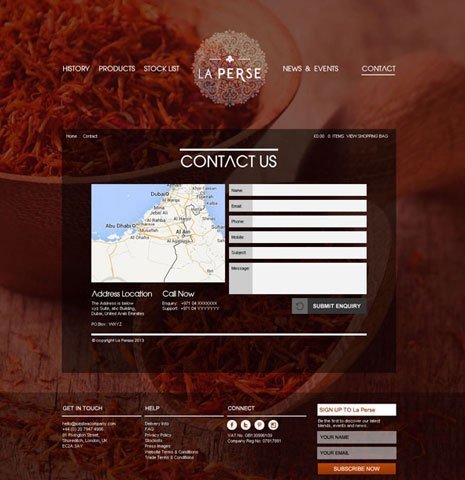Creating an e-commerce website is not just about putting products online. It’s about designing a platform that gives users a smooth shopping experience, builds trust, and supports business growth. However, many websites fail to meet expectations because of small but serious mistakes during the development process. These mistakes may seem minor during development, but they can cause big losses in terms of user trust, search rankings, and sales. Let’s take a detailed look at them and see how they can be avoided.
Weak Design Testing and Approval Process
One major error during e-commerce website development is not having a strong checking and review system for design. Many designers only test how the homepage or one screen looks, without thinking about the complete journey a user takes — from product search to checkout. This becomes a problem when clients or users feel that the site looks incomplete or confusing. If a user struggles with your design, they will quickly leave and shop from a competitor. That’s why it’s important to test your entire website design — navigation, product filters, mobile view, and checkout process — not just one part.
Forcing Users to Download Mobile Apps
Some developers try to push users to download the brand’s app as soon as they land on the website. Pop-ups or messages like “Install our app to continue shopping” may annoy visitors, especially if they are visiting for the first time. This approach can result in higher bounce rates because people don’t like being forced. Instead, the website should be mobile-friendly and allow smooth browsing without any extra requirements.
Ignoring Competitive Pricing and Deals
Some websites sell products at full price all the time, hoping to recover development or business costs. This strategy can push customers away. Shoppers today expect discounts, flash sales, and offers like free shipping or “buy one, get one free.” Ignoring competitive pricing while other websites like Amazon or eBay offer big discounts will only harm your sales. Even a small percentage of discount can grab user attention and encourage them to buy.
No Return or Refund Policy
A missing or unclear return policy is a big red flag for online buyers. People often hesitate to order from websites that don’t mention what happens if the product is not as expected. Allowing easy returns makes buyers feel safe. It shows that your business is confident about its products. A good return policy increases trust and encourages more purchases.
Using the Manufacturer’s Description Without Changes
Many developers copy product descriptions directly from the manufacturer’s websites. This not only affects your SEO since search engines avoid duplicate content but also makes your site less unique. If 100 websites use the same text, there is no reason for Google or a buyer to prefer yours.
Ignoring Mobile Optimization
More than 60% of e-commerce traffic comes from mobile devices. If your website doesn’t work well on a phone or tablet, you are losing customers. Many developers test the site only on desktops. But slow loading times, poor layout, or buttons that don’t work properly on mobile create a bad experience.
Slow Website Speed
One of the biggest reasons users leave an online store is speed. If your homepage or product pages take more than 3 seconds to load, the bounce rate increases dramatically. Speed affects not just user experience, but also SEO and Google ranking.
Complex Checkout Process
A checkout process with too many steps can make users abandon their carts. Forcing users to sign up, enter unnecessary information, or go through multiple pages will result in lost sales. Some users just want to checkout as guests or use their preferred payment method quickly.
No SSL or Security Badges
Trust is everything in e-commerce. If your website doesn’t have a secure connection or visible trust badges, many users will leave during payment. Security symbols give users peace of mind when entering card details.
Missing Product Filters and Search
Imagine visiting a website with 1000 products and no way to filter them by brand, price, size, or category. That’s frustrating. Without proper filters and search functionality, users struggle to find what they want. This can directly affect conversion rates.
Weak or No Analytics Setup
Many developers launch the website and forget to connect Google Analytics or any tracking tool. Without tracking, you cannot understand how users behave or what needs improvement.
No A/B Testing for Improvement
After launching the site, most businesses never run tests on layout, product pages, or buttons. You may think your design is perfect, but the data can show otherwise. Even small changes in button color or layout can improve sales when tested properly.
No Social Proof (Reviews and Testimonials)
Shoppers trust other buyers. If your website doesn’t display customer reviews, it feels incomplete or unreliable. Websites with user reviews often see more conversions. People like to see feedback from others before they decide to buy.
Bad URL Structure and Poor SEO Basics
A URL like www.mystore.com/prod1234 gives no idea what the product is about. Also, not using meta titles, descriptions, and alt tags damages search engine ranking. Many sites skip this step during development, assuming it can be done later, which is a mistake.
No Maintenance Plan
Websites are not a one-time project. If you build a store and leave it untouched, bugs, security issues, or outdated content will appear. Many developers forget to plan for regular updates and maintenance. As a result, the site becomes slow, broken, or even hacked.
Not Including Shipping Details Early
Another common issue is hiding shipping costs or details until the final checkout step. This annoys users, and many leave before completing their order. Customers want to know if there is free shipping or how much delivery will cost upfront.
Not Supporting Multiple Payment Gateways
Limiting users to one payment method such as only cards or bank transfers can hurt sales. Many customers want the option to pay via cash on delivery, PayPal, wallet payments, or local services. Lack of flexibility can lead to cart abandonment.
Broken Links and Missing Pages
Sometimes, during development, placeholder links or pages are left unfinished. If a user clicks on something that goes nowhere or gives an error, it damages the brand image. These issues are often forgotten unless a thorough check is done.
No Chat Support or Contact Options
Many buyers have questions before purchasing. If there’s no quick way to reach out — like a live chat or visible contact form — they’ll leave. Even a basic chatbot or email support button can help capture those users who need assistance.
Not Checking Browser Compatibility
Your website may look great on one browser but broken on another. During development, many developers skip cross-browser testing. This results in distorted images, missing functions, or wrong layouts for some users.
Final Thoughts
An e-commerce website is your digital store, and just like a physical store, it must be clean, functional, and welcoming. Small mistakes in design, speed, layout, or communication can cost you trust, traffic, and sales.
To avoid these errors, plan your website carefully, test everything from user flow to checkout, and always keep improving based on user behavior and feedback. Take care of content, speed, pricing, return policy, filters, SEO, and checkout. And most importantly, stay updated — because customer expectations and competition are always changing.











